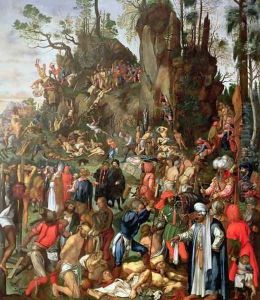Johann Christian Ruprecht Paintings
Johann Christian Ruprecht was a German painter and engraver born in 1687, whose work contributed to the cultural landscape of the early 18th century. His life and career were marked by the Baroque influence, which was prevalent in the art and architecture of his time. Ruprecht's work is characterized by its detailed execution, intricate designs, and the use of light and shadow, hallmarks of the Baroque style. Despite the widespread recognition of Baroque art, specific details about Ruprecht's life and training remain relatively obscure, a common issue for many artists of his era.
Ruprecht's career unfolded during a period of significant historical and cultural changes in Europe, including the aftermath of the Thirty Years' War and the dawn of the Enlightenment. These events shaped the artistic landscape, prompting a move towards more detailed and emotionally expressive works. Ruprecht's engravings and paintings often depicted religious and mythological themes, a reflection of the period's interest in classical antiquity and Christian subjects. His ability to blend drama with attention to detail made his works particularly compelling for contemporary audiences.
Despite the lack of extensive personal records, Ruprecht's contributions to the art world are recognized through his surviving works and the influence they had on his contemporaries and successors. His engravings, in particular, were notable for their precision and depth, making use of the contrasts between light and dark to create a sense of three-dimensionality. This technique, known as chiaroscuro, was a defining feature of Baroque art and contributed to the dynamic and emotional intensity of the period's artistic output.
Johann Christian Ruprecht passed away in 1747, leaving behind a legacy that, while not as widely known as some of his contemporaries, played a significant role in the development of German Baroque art. His works continue to be studied and appreciated for their contribution to the evolution of European art, providing insight into the artistic and cultural dynamics of the early 18th century.
